Anatomy and Function
- The shoulder joint is made up of three bones, the arm bone (humerus), the shoulder blade (scapula), and the collar bone (clavicle)
- The ends of the bones are covered by a slippery and shiny material called cartilage.
- Cartilage acts as a shock absorber and allows the joint to glide.
Types of Arthritis
- There are four major types of shoulder arthritis. While the exact cause of arthritis may be different, they all share in that the normal smooth cartilage surface on the ends of the bone has been destroyed leaving bone rubbing on bone.
- Osteoarthritis is a degenerative shoulder condition that many people refer to as “wear-and-tear”. This type of shoulder arthritis is most common in people over the age of 50 years.
- Post Traumatic Arthritis is a form of osteoarthritis that develops many years after an injury, such as a fracture or dislocation of the shoulder.
- Cuff Tear Arthropathy is uncommon, but occurs in people who have had a large rotator cuff tear for many years. Treatment for this type of arthritis may be with a reverse total shoulder arthroplasty, which replaces the damaged shoulder joint and allows the large muscle on outside of the shoulder (deltoid) to move the shoulder without a rotator cuff.
- Inflammatory Arthritis can affect people of any age and usually causes problems in multiple joints on both sides of the body. An example of inflammatory arthritis is Rheumatoid arthritis, which is an autoimmune disease.
Risk Factors
- Age – most common among older patients
- Personal or family history of arthritis
- Inflammatory conditions such as rheumatoid arthritis
- Repetitive lifting and overhead movements such as throwing, weight training, daily chores, and manual labor can produce overuse injury.
Symptoms
- Most common symptom is pain, including pain at night that wakes you from sleep.
- Another common symptom is stiffness and loss of motion, which causes difficulty lifting, reaching or stretching the arm.
- The type of pain experienced is quite variable and may be dull and aching or sharp and stabbing.
- Pain is almost always made worse by activity and progressively worsens.
- Crepitus (crackling) and grinding sensation deep within the joint is common
Diagnosis
- Physical examination
- Areas that reproduce pain
- Range of motion
- Rotator cuff strength
- Positions and movements that reproduce pain
- X-rays help determine the extent of arthritis in the shoulder X-rays show the doctor bones, but do not show soft tissues.
- MRI (magnetic resonance imaging) helps us look at the soft tissues like the rotator cuff tendon.
- CT (computed tomography) scan may be necessary we decide to perform a shoulder replacement surgery.
Treatment
- The goal of treatment is to reduce pain and regain function.
- Non-Surgical – Most patients can be managed for long periods of time or even forever without needing surgery. Because we don’t walk on our hands, the shoulder does not have to bear weight the same way a hip or knee does.
- Rest and Activity Modification can allow your shoulder inflammation a chance to calm down. You may also be able to change your activities to avoid those things that cause pain.
- Non-steroidal anti-inflammatory (NSAID) medication by mouth can improve the inflammation and help manage symptoms.
- Injection of Steroid medication into the shoulder joint itself can help reduce inflammation and pain. These shots can be given up to 3-4 times each year as necessary.
- Injection of Lubricant called viscosupplementation may improve symptoms in a subset of patients. This treatment is not yet approved by many insurance companies and therefore carries an out of pocket expense for patients.
- Platelet-Rich-Plasma (PRP) – may improve symptoms in a subset of patients. PRP is acquired by using a portion of your own blood that contains anti-inflammatory products to inject within the shoulder. This treatment remains experimental rarely covered by insurance so it comes as an out of pocket expense for patients.
- Physical Therapy is an important tool to help you strengthen and retrain the muscles of the rotator cuff to work better together.
- Surgical – Arthritis that does not improve with conservative care may be treated with a shoulder replacement.
- Total shoulder arthroplasty (replacement) is very effective for pain relief and improving function. Replacing the humeral head with a metal ball and replacing the socket with a new one constructed of a special plastic replaces what was arthritic and damaged. A standard total shoulder replacement requires that your rotator cuff not be torn. Additional imaging studies such as an MRI may be required in some patients if there is concern.
- Reverse total shoulder arthroplasty (replacement) is an important innovation that provides an option for patients with severe arthritis that do not have a rotator cuff. The “reverse” gets its name because the arthritic ball is replaced with a socket and the arthritic socket is replaced with a ball.


